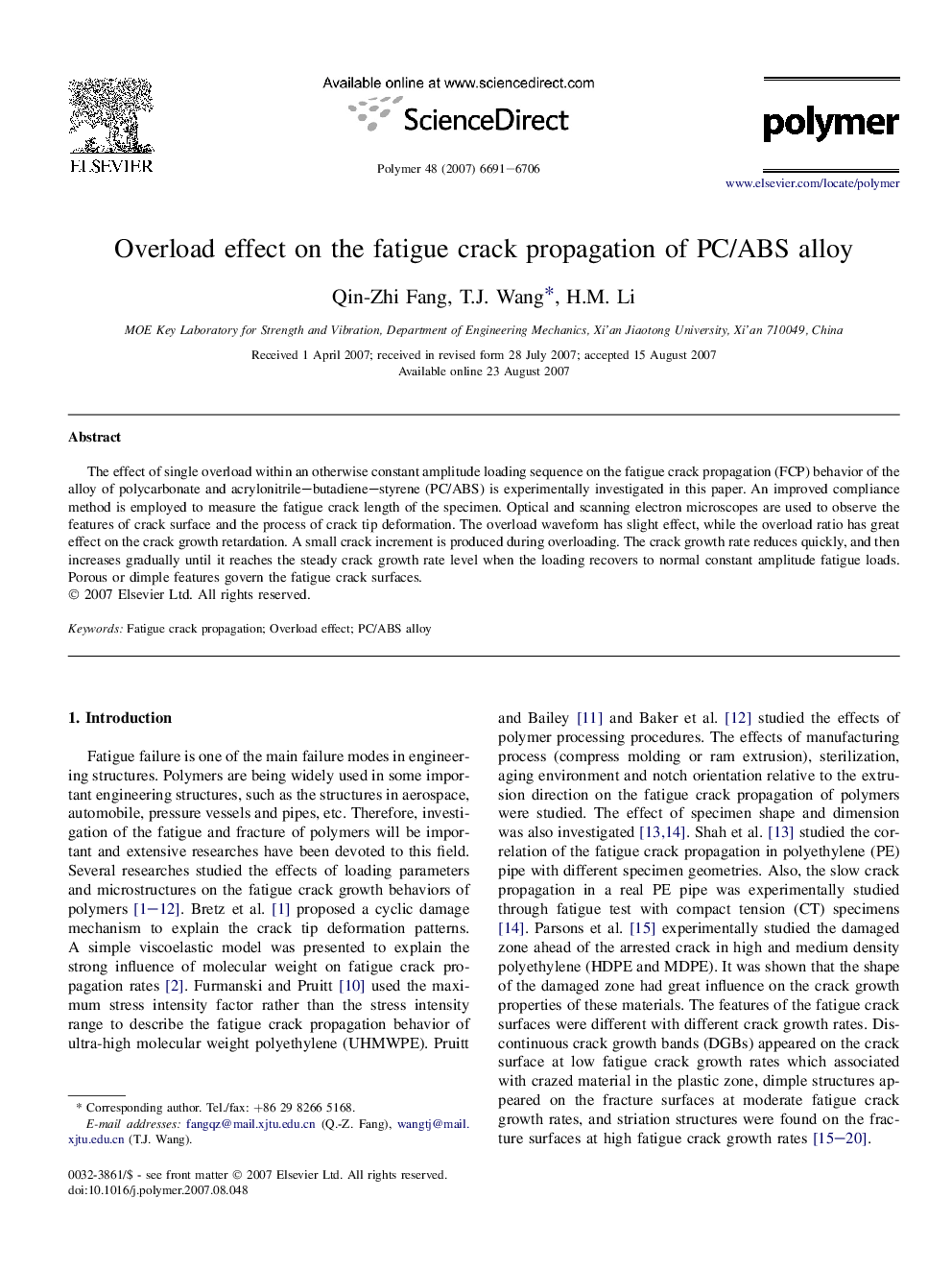| Article ID | Journal | Published Year | Pages | File Type |
|---|---|---|---|---|
| 5188406 | Polymer | 2007 | 16 Pages |
Abstract
The effect of single overload within an otherwise constant amplitude loading sequence on the fatigue crack propagation (FCP) behavior of the alloy of polycarbonate and acrylonitrile-butadiene-styrene (PC/ABS) is experimentally investigated in this paper. An improved compliance method is employed to measure the fatigue crack length of the specimen. Optical and scanning electron microscopes are used to observe the features of crack surface and the process of crack tip deformation. The overload waveform has slight effect, while the overload ratio has great effect on the crack growth retardation. A small crack increment is produced during overloading. The crack growth rate reduces quickly, and then increases gradually until it reaches the steady crack growth rate level when the loading recovers to normal constant amplitude fatigue loads. Porous or dimple features govern the fatigue crack surfaces.
Related Topics
Physical Sciences and Engineering
Chemistry
Organic Chemistry
Authors
Qin-Zhi Fang, T.J. Wang, H.M. Li,
